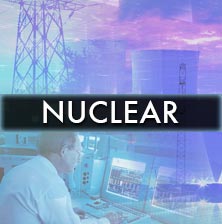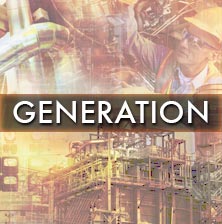The following is a small selection of items recently published by EPRI. To view complete lists of your company-funded research reports, updates, software, training announcements, and other program deliverables, log in at www.epri.com and go to Program Cockpits.

This software helps decision makers at nuclear plants create long-term asset management strategies, prioritize capital spending, and better understand capital costs for long-term operations.

Closed Brayton power cycles using supercritical CO2 as the working fluid are being researched as an alternative to the traditional steam-Rankine power cycle for electric power generation. This report summarizes a preliminary Aerojet Rocketdyne cost-benefit study of direct oxy-gas-fired closed Brayton cycle turbines using rocket engine-derived turbine technology. The study compares the cycle’s efficiency and levelized cost of electricity with U.S. Department of Energy base cases for natural-gas combined-cycle power plants with CO2 capture.

This report describes EPRI efforts to enhance water resource sustainability in the electric power sector. It discusses EPRI’s recent water use study, power plant cooling infrastructure in the United States, and cooling technology R&D.

This report evaluates the economic viability of installing heat-driven membrane distillation technology at a thermoelectric power plant to treat brackish groundwater or wastewater for makeup water in cooling towers. Results from a preliminary analysis on three coal plants and one natural-gas combined-cycle plant showed that they produce enough waste heat from the condenser loop and flue gas to generate all their makeup water.

Energy—electricity generated at power plants and delivered to consumers—is a commonly understood grid concept. A less familiar but equally important concept is capacity—the capabilities of wires, transformers, generators, and other power-system equipment to continuously and flexibly meet consumers’ dynamic demand for energy. This latest installment in EPRI’s series of Integrated Grid white papers looks at the important roles of energy and capacity in integration of distributed energy resources, drawing on various EPRI research. Topics include impacts of emerging technologies on capacity, costs to supply capacity, emerging rate structures, and R&D needs to enable capacity from distributed energy resources.

This report discusses the state-of-the-science of air quality microsensors (small devices that measure optical, chemical, and other properties of systems and environments); the potential value of microsensors to air quality management and utility air quality applications; and the results of an EPRI pilot study on the suitability of optical particulate matter sensors for detecting power plant dust emissions.

Conducted by EPRI and the Natural Resources Defense Council, this in-depth analysis simulates emissions and air quality impacts of a significant shift from internal combustion engines to electric vehicles and equipment. When combining emissions reductions from vehicle electrification, a cleaner electric sector, and existing programs that improve conventional vehicle efficiency, the modeled electricity and transportation sectors together achieve a 48% reduction in greenhouse gas emissions between 2015 and 2050 in a conservative scenario, and a 70% reduction in an aggressive scenario. The full report can be downloaded here: Volume 1, Volume 2, and Volume 3.

Tube-to-header weld joints in heat recovery steam generators are difficult to inspect with conventional probes due to their complex geometry. This report describes the access requirements and preliminary design for a robotic scanner with two extendable arms that can potentially inspect these difficult-to-reach areas while traveling on magnetic, motor-driven tracks along the underside of headers.

While the reliability of zirconium alloys for nuclear fuel cladding in light water reactors has been excellent, the Fukushima accident illustrated the vulnerability of these alloys to rapid steam oxidation during a severe accident when the reactor core is interrupted for a long time. EPRI has conducted a feasibility study for a coated molybdenum alloy to enhance the accident tolerance of fuel rods by providing higher resistance to steam oxidation. This report describes progress made in fabricating the alloy, laboratory characterization of key material properties, and future plans.

An important component in natural gas power plants is a compressor that pressurizes air and directs it to a combustion system. This report describes various aspects of compressors, including performance, potential problems, and monitoring sensors.

How can coal remain competitive with low-carbon generation technologies? This modeling study developed a best-case scenario for a coal-fired power plant with carbon dioxide (CO2) capture to meet proposed U.S. Environmental Protection Agency emissions standards. It is one of a series of EPRI studies on ways to improve coal plant efficiency and optimize CO2 capture.

This report provides an overview of two online monitoring techniques used to detect anomalies in power plant electrical equipment. It includes information on sensor installation and a list of anomalies that can be detected.